While preparing for the trip, I realized many times that I didn’t know Greece at all. For example, the city Nafplio, a very ancient city (older than Mycenae), the first capital of independent Greece. I only learned about it while planning my itinerary: the city is interesting in its own right, and it's also very conveniently located, so we stayed there for three nights.
On our very first evening, we went to the beach (about fifteen minutes from our apartment), then strolled along a beautiful path along the sea. For some reason, the promenade was blocked on both sides by gates, which everyone bypassed (there was even a well-trodden path there).
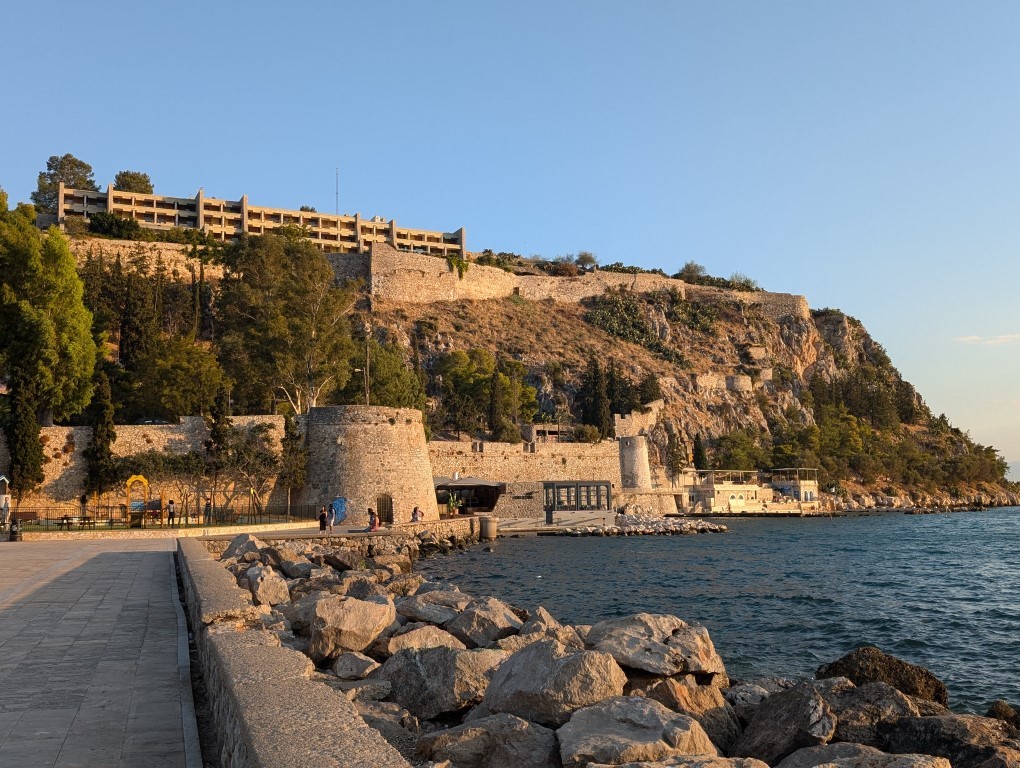
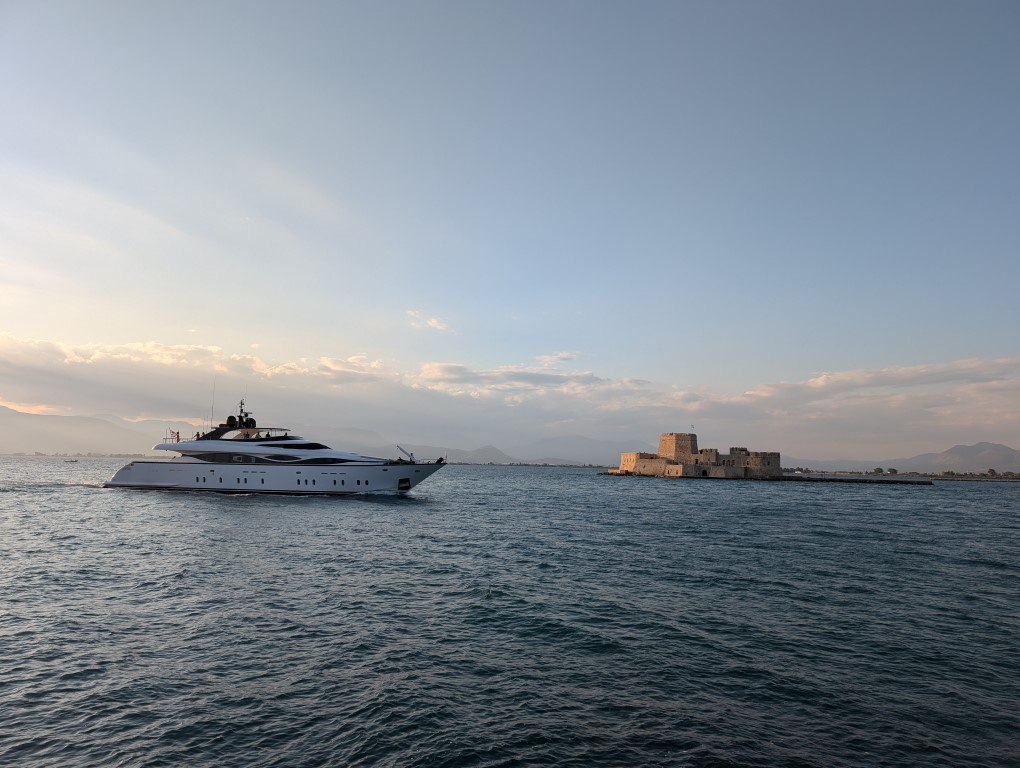



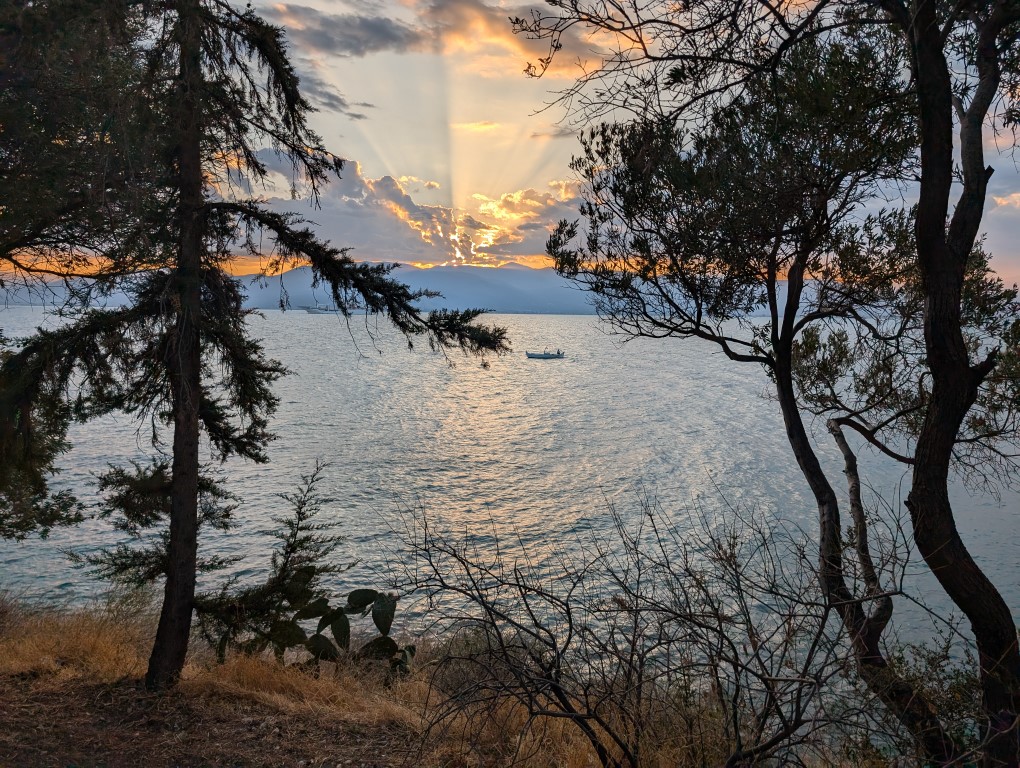
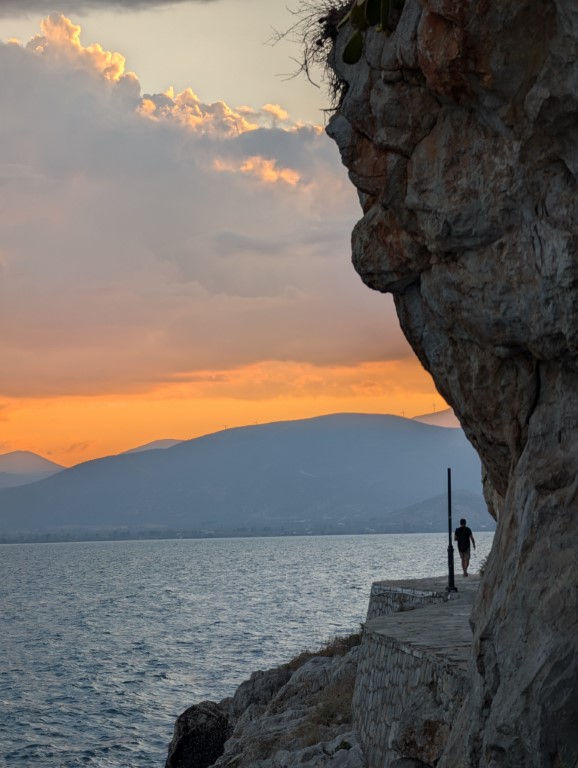
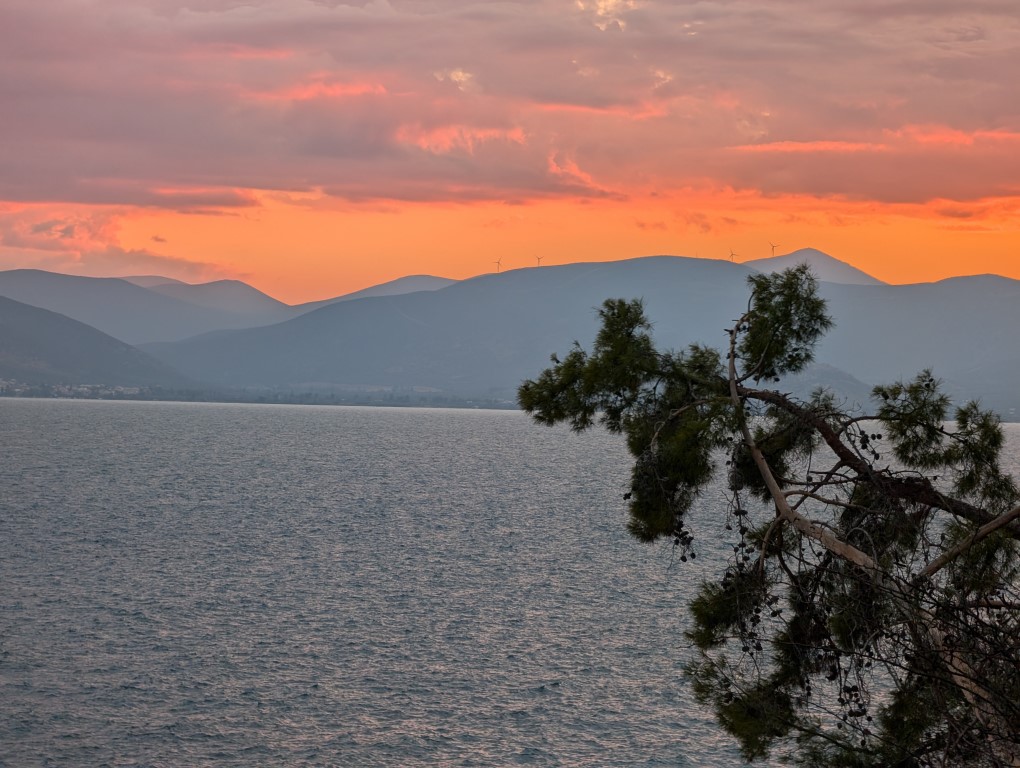
The next morning we climb up Palamidi fortress. According to various sources, the staircase to the top has 913, 921, or 999 steps, and all the guidebooks advised either climbing early in the morning, before it gets too hot, or driving there (there's a road leading up from the other side). In reality, the climb isn't difficult at all (especially compared to Grand Canyon or a mountain Mauna Kea), but the views from the stairs are interesting.
For example, this ugly building in the photo. In the middle of the last century, when post-war Greece was trying to attract tourists, someone came up with the idea of building a concrete box on top of the ancient fortress. Acronauplia — that's cool and progressive. I wonder how they even got permission to do this—I think a hefty bribe was involved. Tellingly, the hotel was popular for quite a while (and of course, in such a great location!), but in the early 2000s, something went wrong. Here are some links with details:
- r/AbandonedPorn (in English)
- How Greek hotels are dying.
Well, we continued on up. It was good to arrive early: there were only a few of us in the entire fortress, and no one was interfering with our detailed inspection.

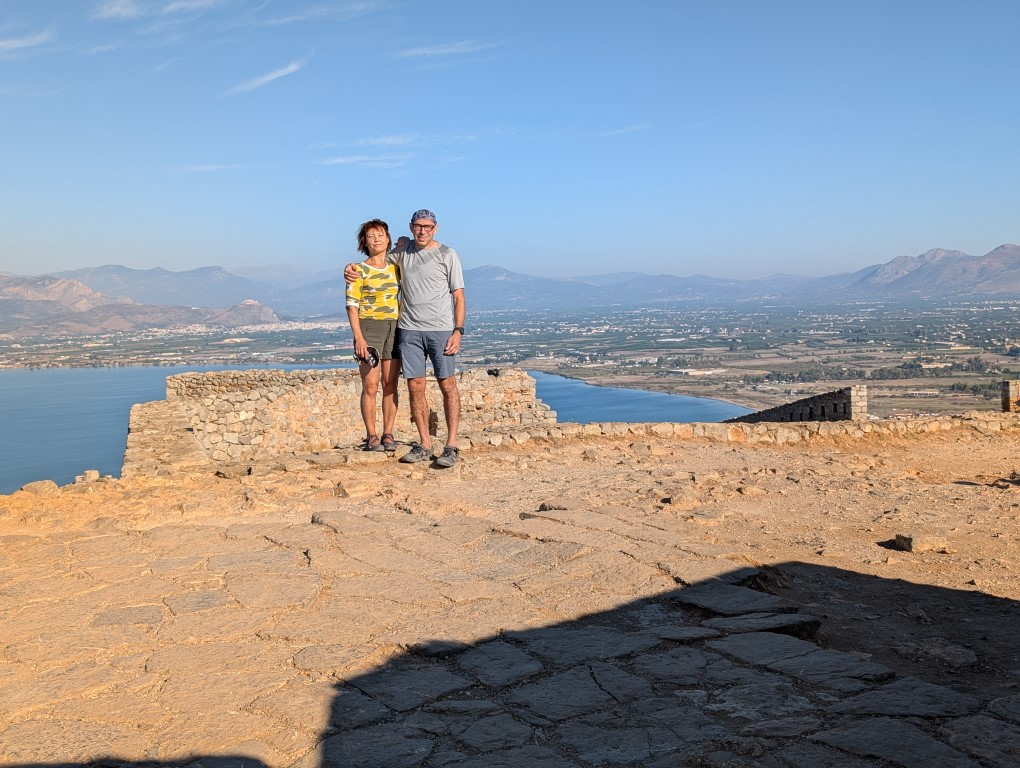

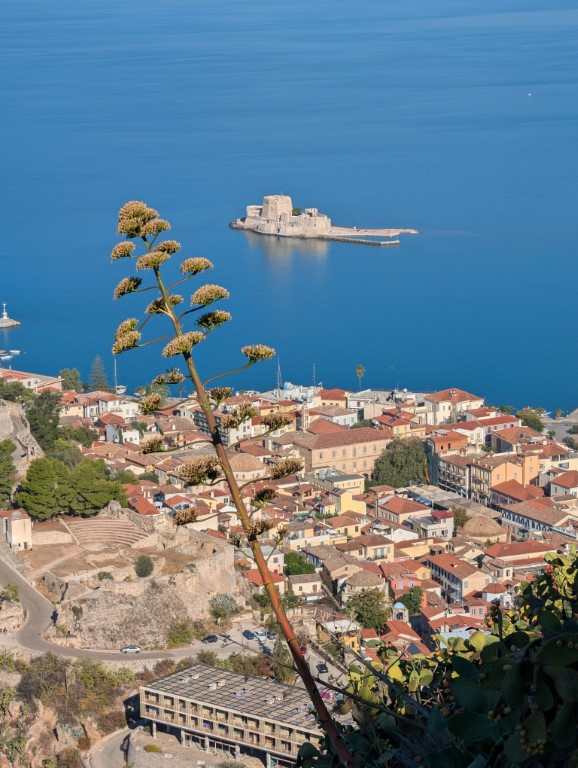

On the way back, we discovered that the street in front of the fortress stairs had become a farmers' market. After buying a liter of local wine for two euros and some fresh fish, I started thinking about moving to Greece again.
The island-fortress of Bourtzi
Burdzion Island (Bourtzi) is impossible to miss—it's visible from practically everywhere in Nafplio. It resembles a stone ship—that's because the island is almost entirely occupied by a fortress of the same name, built by the Venetians in the 15th century to defend themselves from the Turks. It didn't help them, however.
In 1950, a luxury hotel opened on the island (though the luxury was all about exclusivity—the rooms themselves are quite austere), and now it's a tourist attraction. There's a boat service to the island, and a ticket costs about 5 euros, plus another 5 euros for entrance to the fortress. We happily spent a couple of hours there.
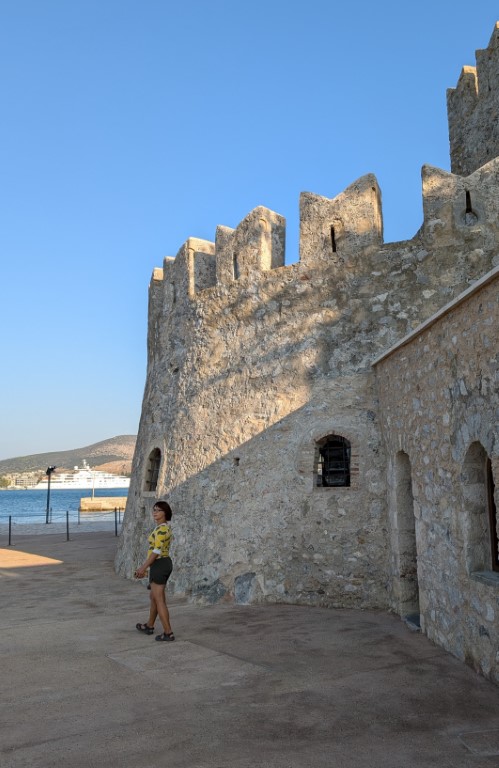
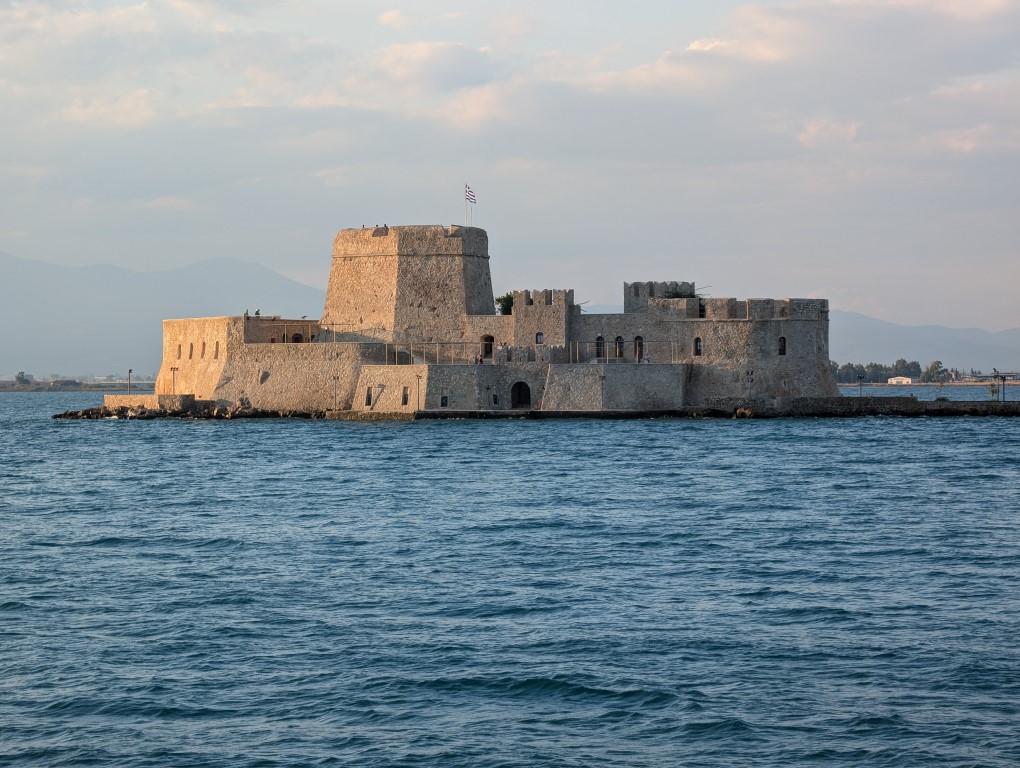
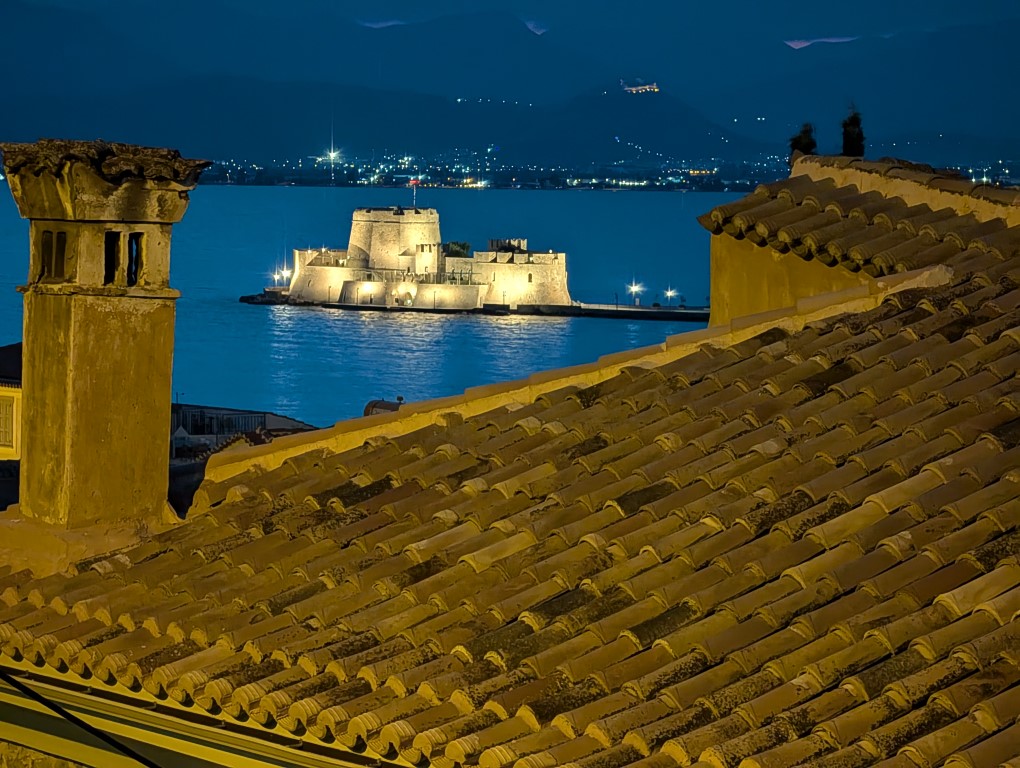
Evening Nafplio.
After dinner, we go for a walk to see the city at night. It looks nice—narrow streets, through which we wander aimlessly.
At some point we come out to strange object, reminiscent of the entrance to an underground bomb shelter. The entrance is unguarded, and we step inside. We see several elevators, one of which even has working buttons. There are only two—up and down. Since we're at the bottom, we press the top one, and a couple of minutes later, we find ourselves on a mountain above the city. Around us is an expensive hotel (rooms start at $400) with a beautiful view of the city (called "Nafplia Palace"). We pass through and descend along the dark road back into the city, stopping to take night photos.
Sanctuary of Aesculapius
I get up early this morning and, for my morning jog, climb the 900-odd steps to the Palamidi Fortress again. The fortress is still closed, but I don't need to go there—I want to take pre-dawn photos from above. It turns out I'm not alone—several other people are watching the sunrise with me. And it was worth it!
We have breakfast and get into the car: today our road leads to the ancient city of Epidaurus.
Once upon a time, when I was in fifth grade, we were studying ancient Greece in history class. And our teacher, Alla Fedorovna Stroy (it's been so many years, but I still remember it), was telling us about ancient Greek theaters—their acoustics were so good that, even sitting in the top row, you could hear the actors on stage without any amplification.
And now, many years later, I am standing in one of these theaters - this is theater in Epidaurus, next to Asclepion — a temple complex dedicated to Asclepius.
And yes, the acoustics are really good.
It's about an hour's drive from Nafplio. In addition to the theater and the Temple of Asclepius, the complex includes a hotel, several baths, and a stadium. In short, it offers everything needed for a healthy lifestyle.
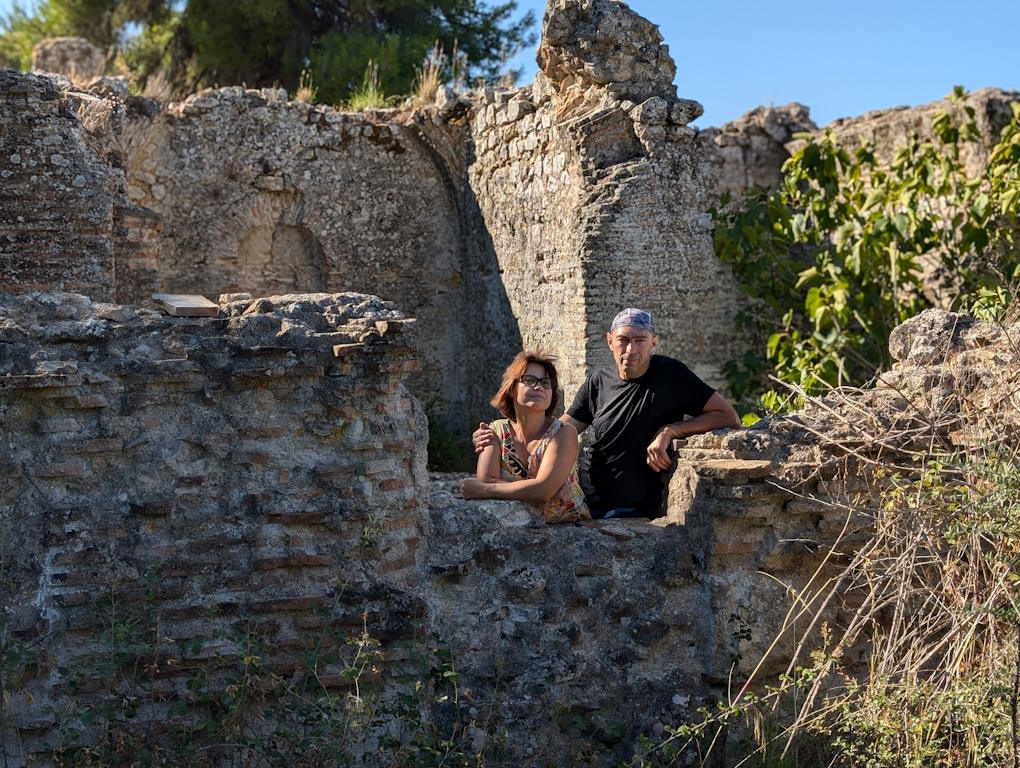
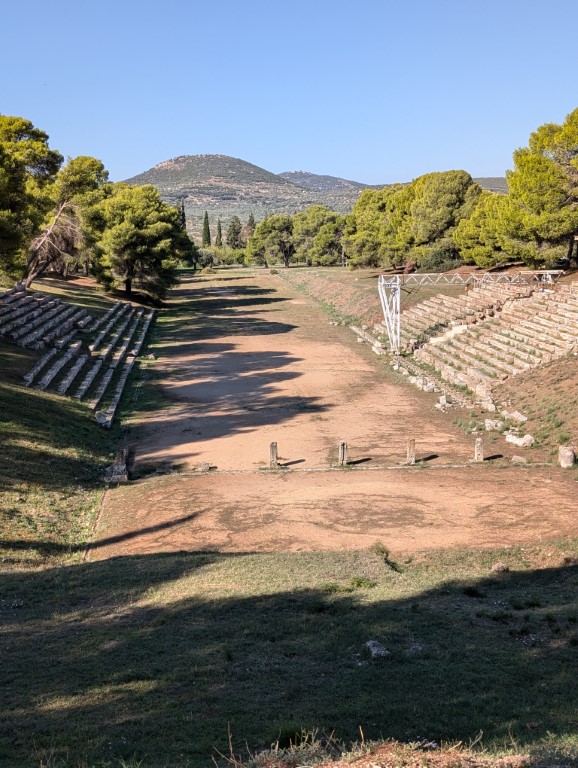
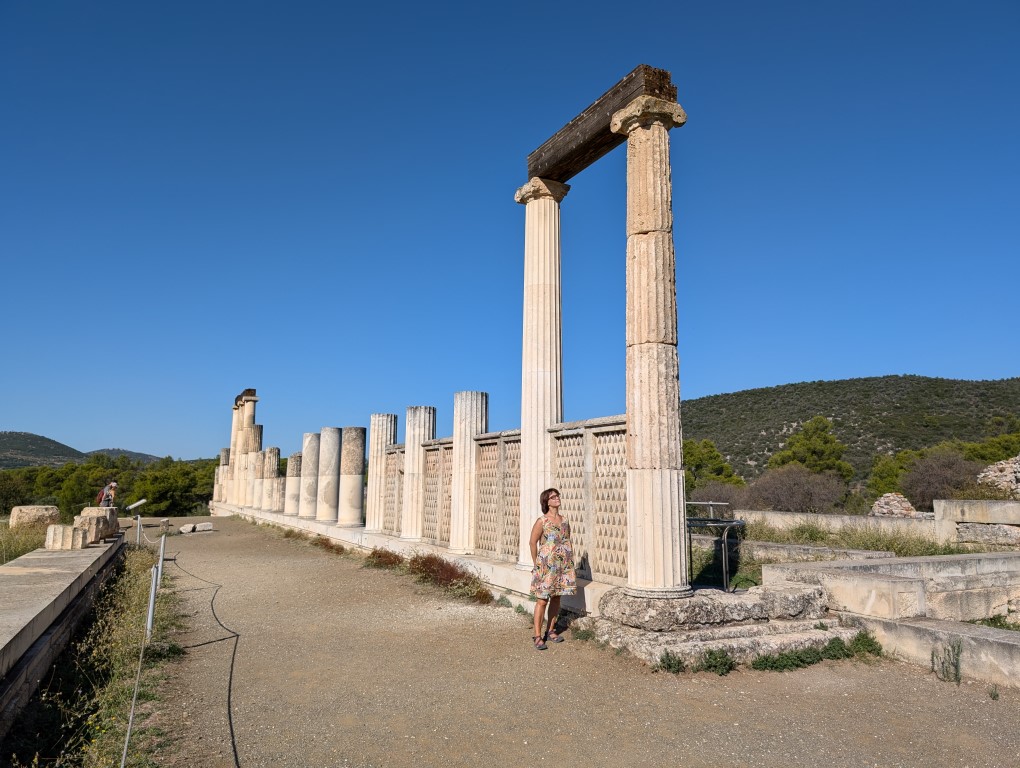
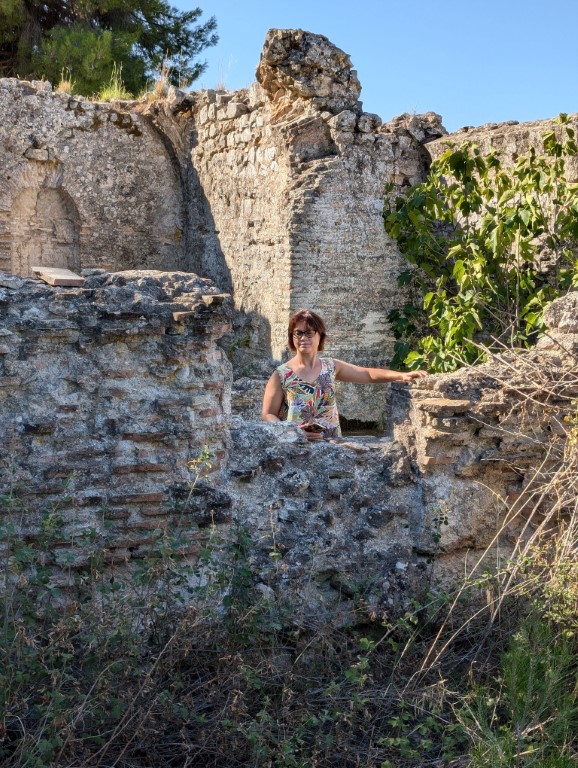
And again, olive trees and pine trees are all around. Apparently, they grow better than other trees in the local rocky soil.
After the temple, we continue on to the seashore. Our destination is a small beach from which you can swim to“sunken city”"In fact, it's not a city, but the remains of several houses near the shore, at a depth of about one and a half meters. They were discovered by chance in the 1970s during aerial photographs. They are believed to be the ruins of a 2nd-century Roman villa.
There aren't many people there, and we happily spend a few hours there, swimming and lounging on the sand. We have lunch at a small restaurant (with cats everywhere) and then continue on to the settlement. Methane.
Along the way, we stop at a pass and admire the beautiful views. For some reason, I thought the Peloponnese was flat, and the mountains awaited us in northern Greece. But it turns out there are mountains everywhere.
We're not interested in the settlement itself, but in the nearby hot springs. Where else can you sit in a spring and immediately plunge into the sea? And for free, and with almost no one around.
A couple of hours on the beaches of Methana, and then it's time to go home. It's been a busy day.
Go to Greek Trip Homepage.